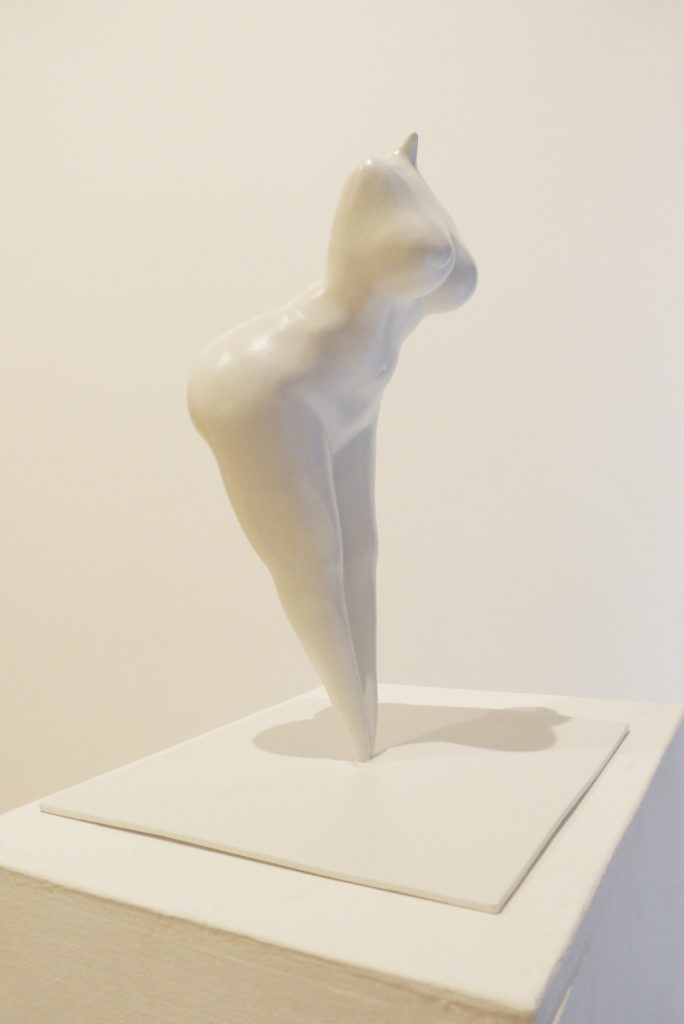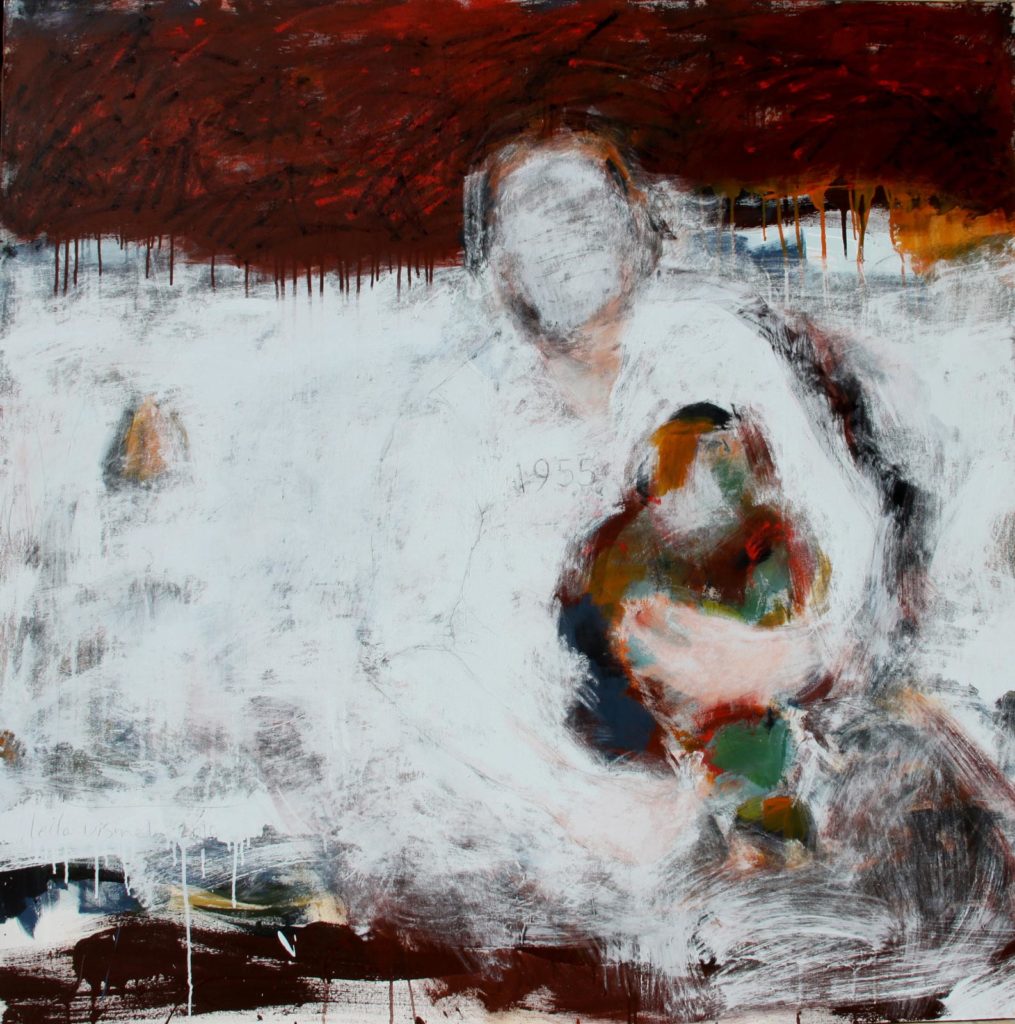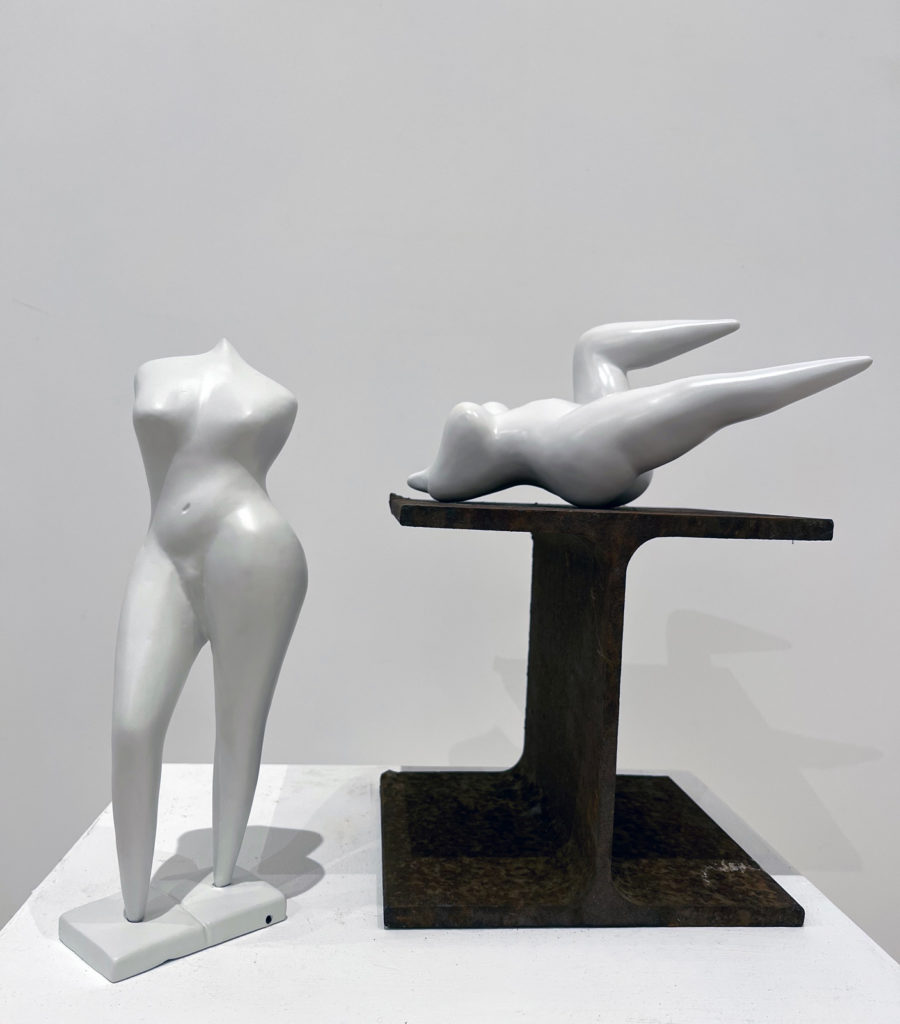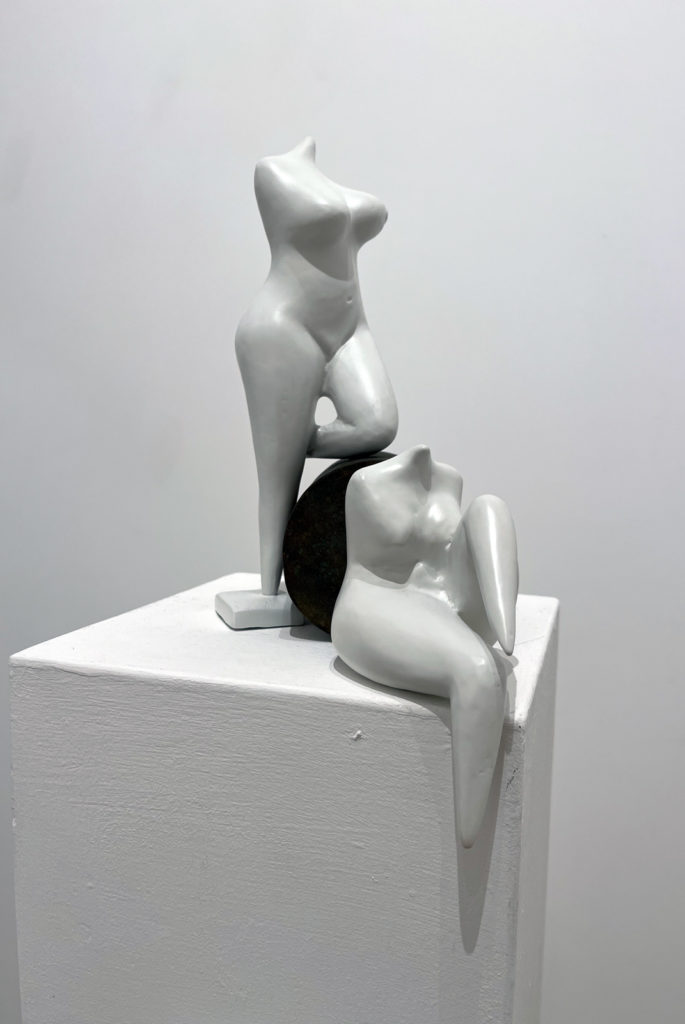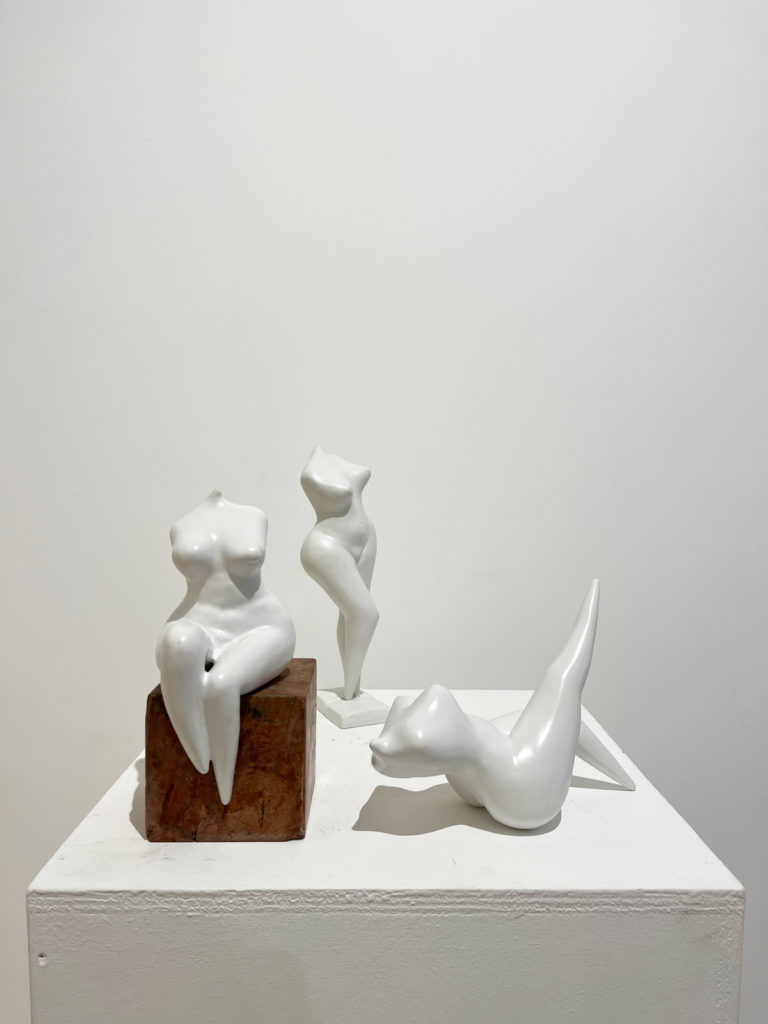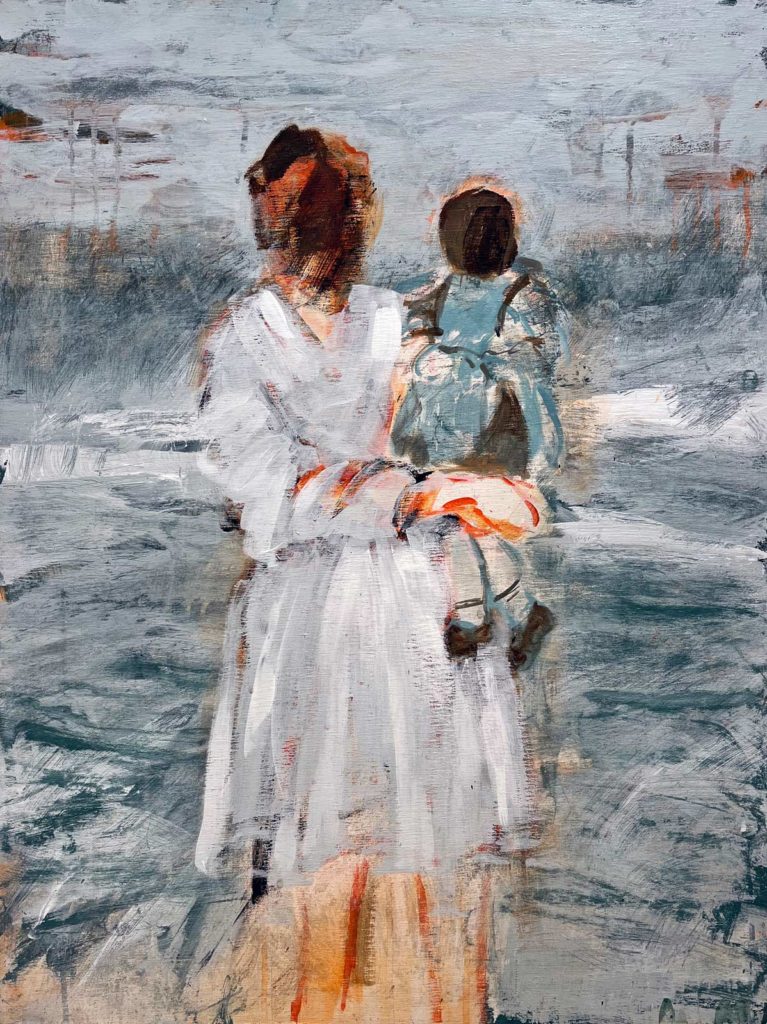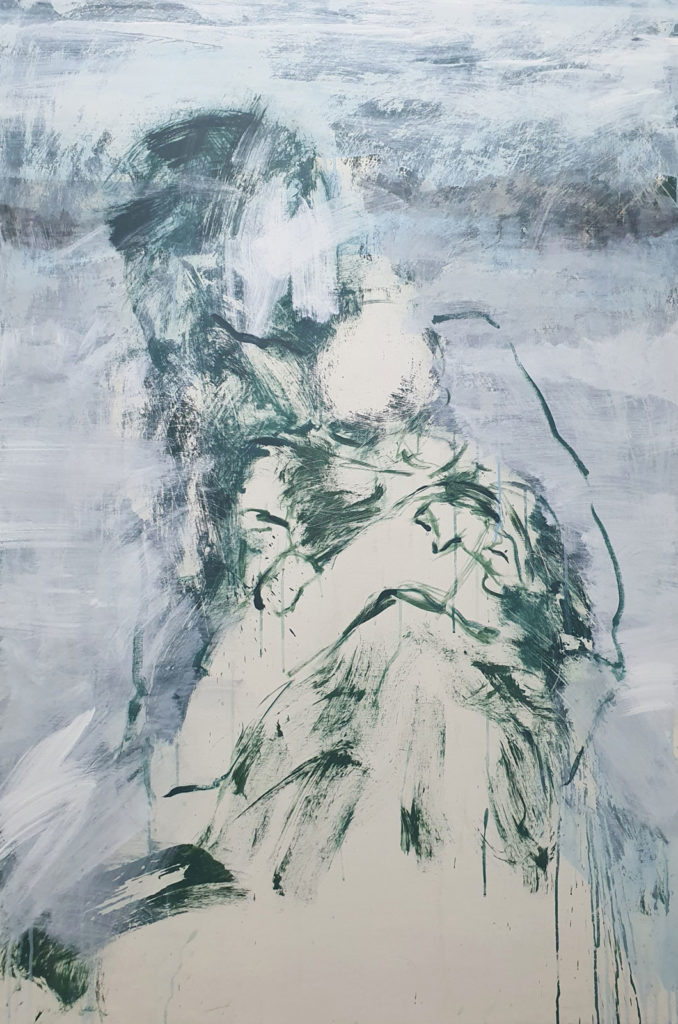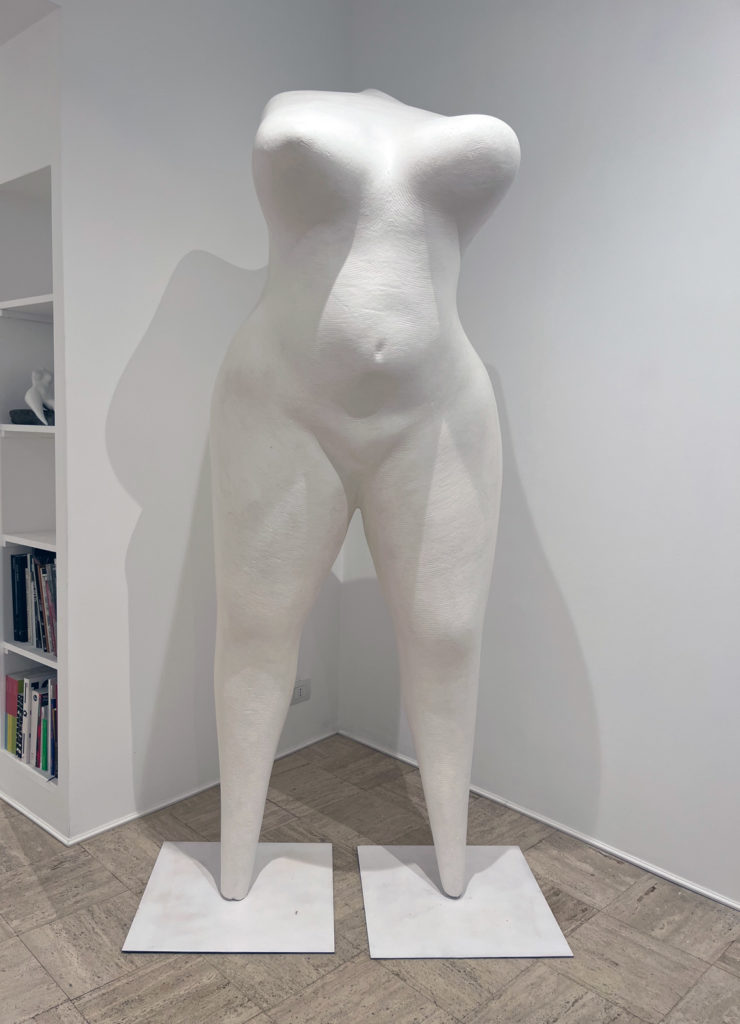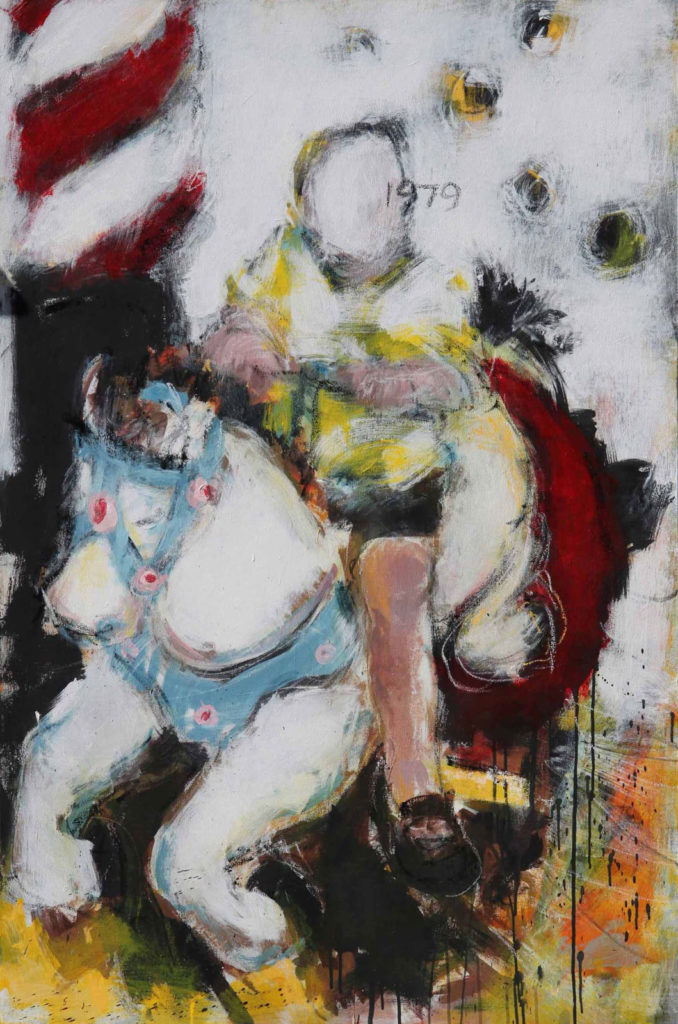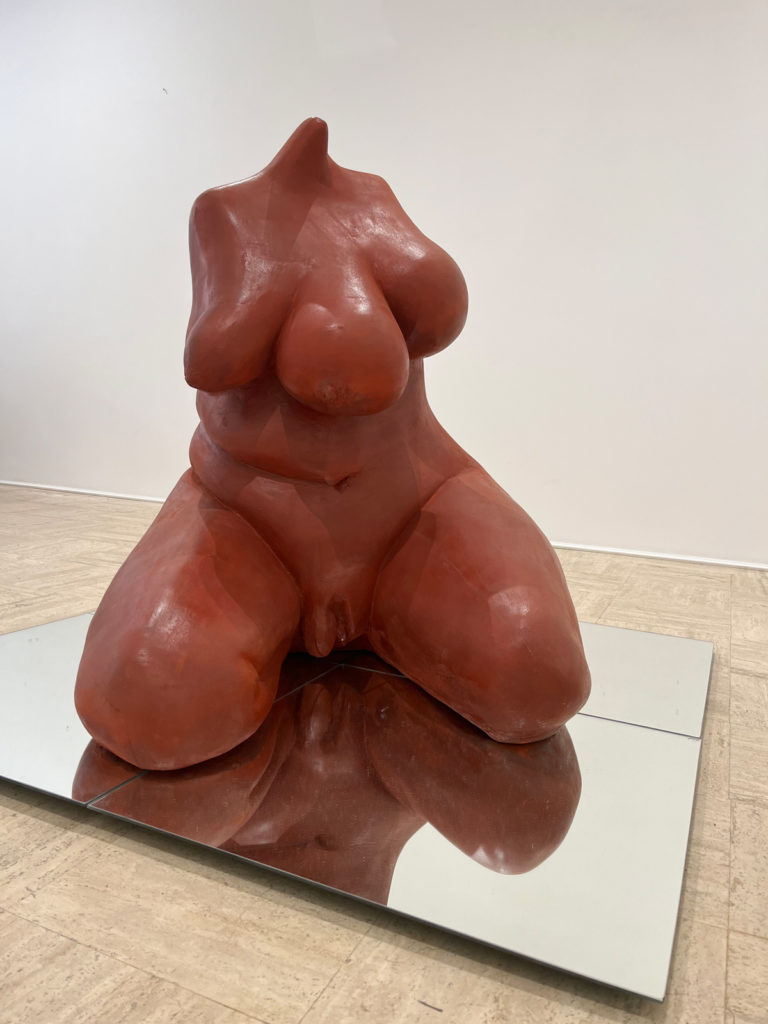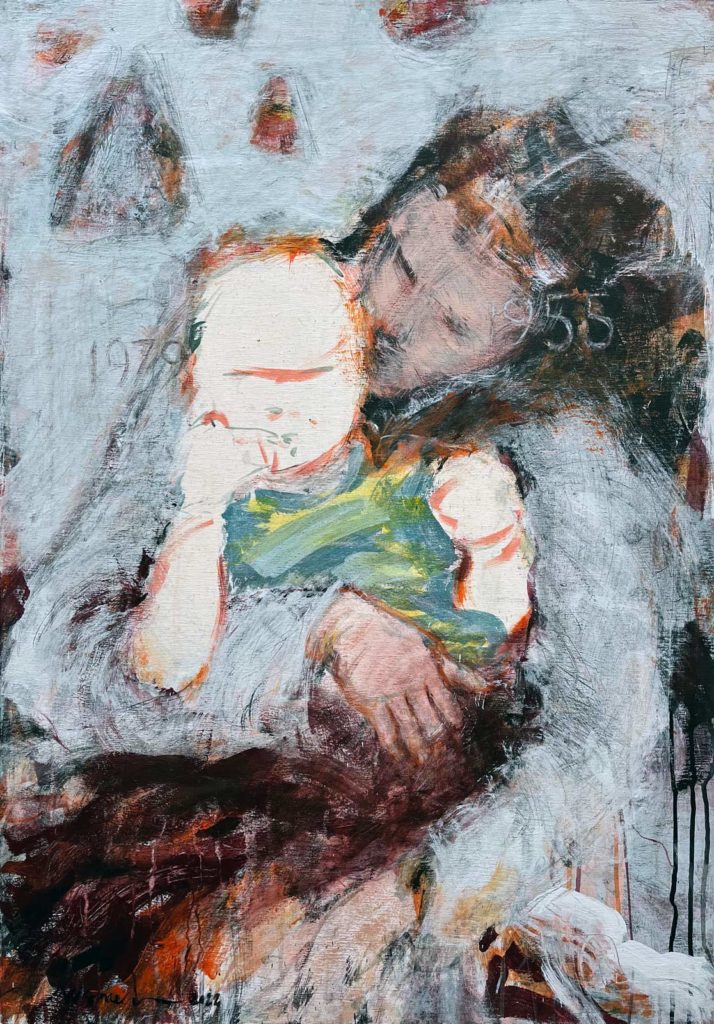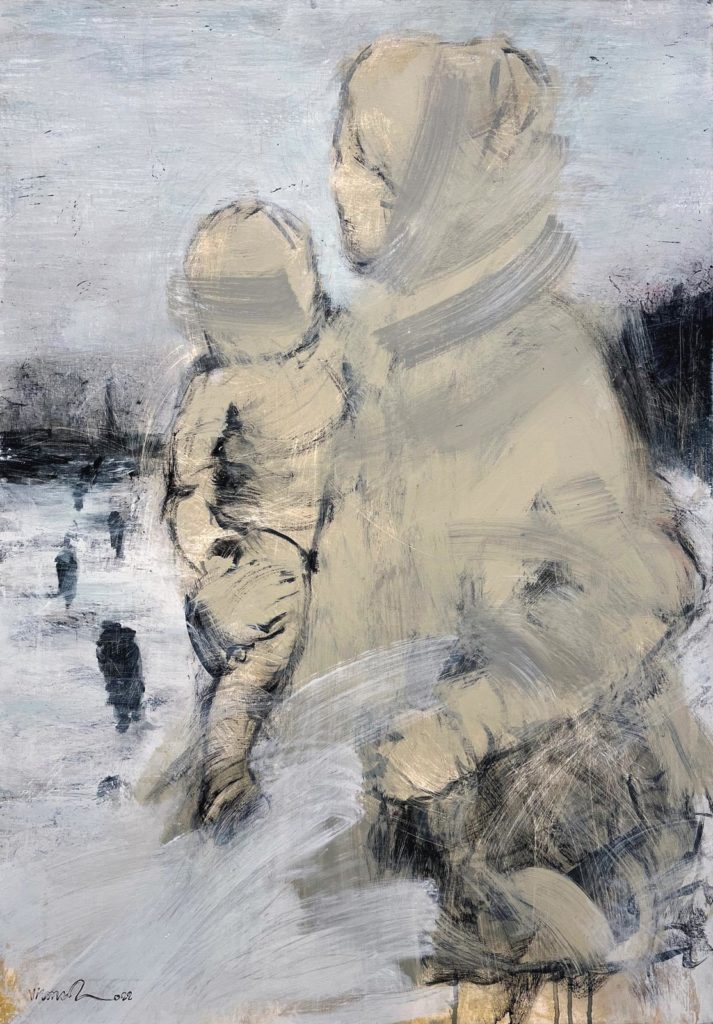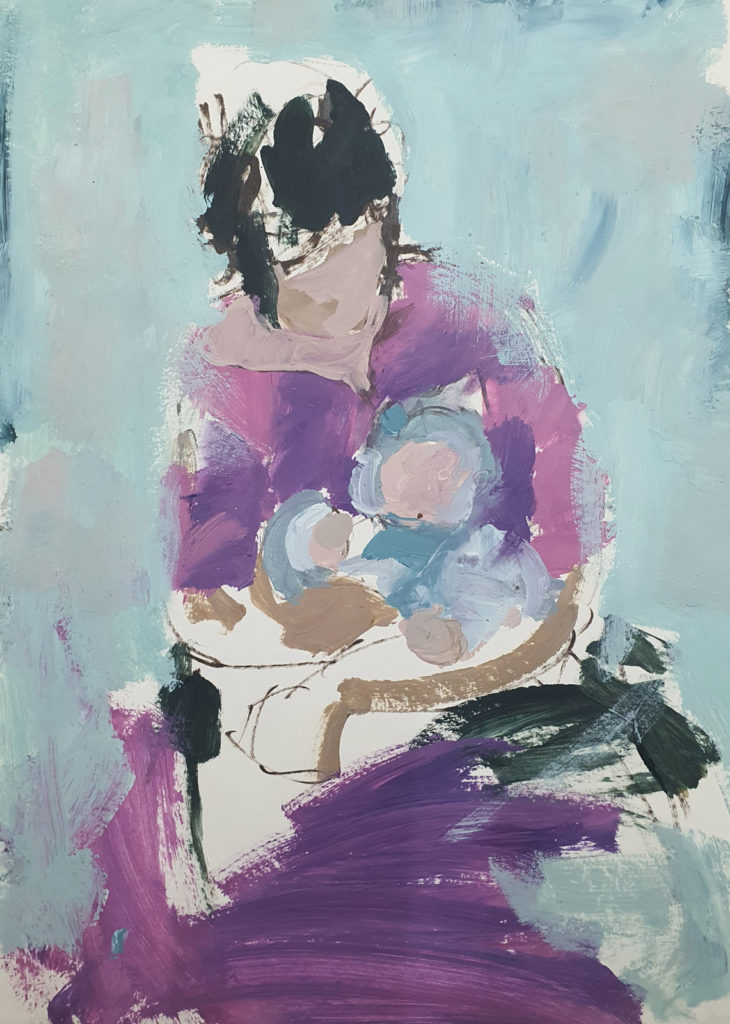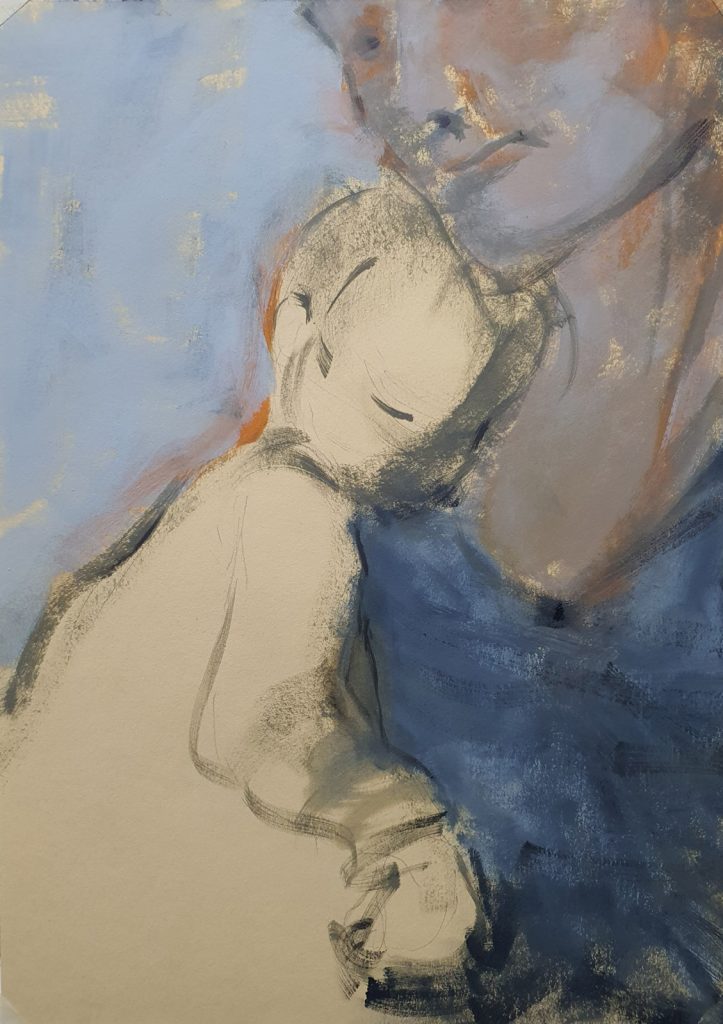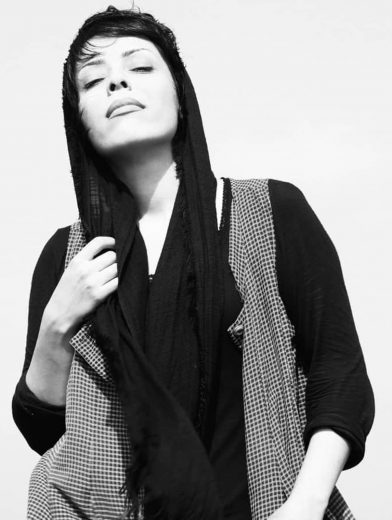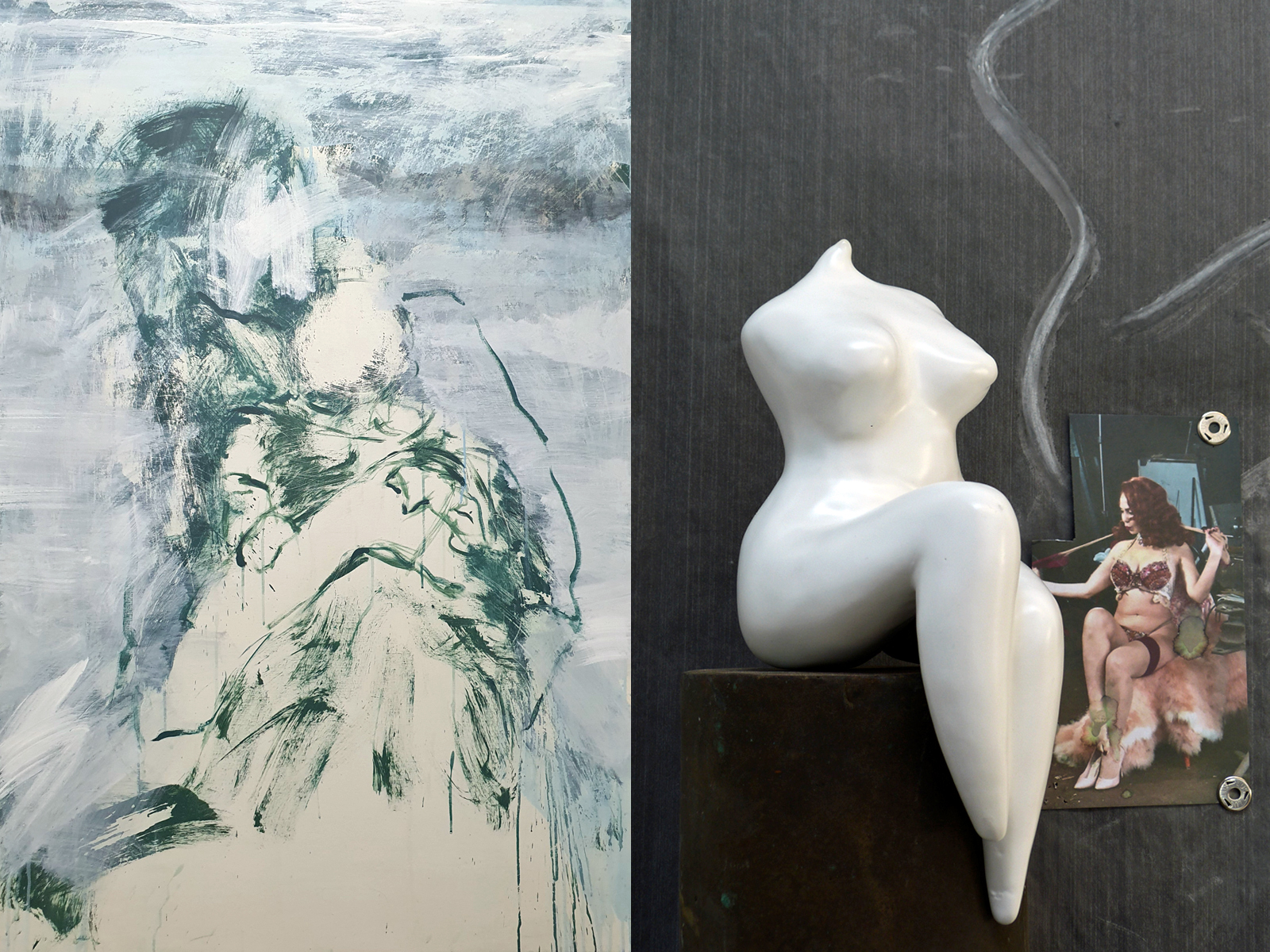
Maja Arte Contemporanea is happy to host a series of sculptures completed by German artist Janine von Thüngen alongside paintings by Iranian artist Leila Vismeh. The gallery has previously curated personal exhibitions for both artists.
A Mother for Earth — The title itself, if said aloud, resembles as a near-invocation, a desperate cry, imploring for primary care. Although this exhibit was conceived before the breakout of the current crisis in the Ukraine, such events have shed new light — or perhaps unearthed a layer of meaning — on its conception. It now stands as a representation against war.
What if? — What if the potency of an artistic message could be used to represent an alternative vision; if through the soft, rich sensuality of von Thüngen’s female nudes we could envision a deep sense of fullness, fecundity, and abundance? If we managed to affirm life — and the implicit care required by it — by sharing the varied chromaticisms that abound in Vismeh’s painted maternities? How frightening would it be to bid goodbye to a persistent present perfect and to assert its opposite instead; to wave goodbye to the ‘clan’ and state proudly: “I am different.”
In commenting on von Thungen’s sculptures, Isabella Ducrot writes “[they] occupy space as a multitude of question marks. They demand responses, obstinately, never seeking to be reassuring. […] Evidently, almost seductively, each of these statues, whether big or small, combines opposite personalities. The women are bold, liberated, free from allusions to edenic deities or sacrality […]. Yet in spite of their assuredness and determination, these statues are headless. It does not seem as though they have lost their head, but rather as if they never had one.”
The same absence is found in the faceless figures on Vismeh’s canvases. Margareth Dorigatti notes, “If life is both a struggle and a balancing of opposites, then polemos (war) becomes what it is precisely because it is not its opposite. Thus, as Spinoza believed, ‘every determination is, simultaneously, a negation.’ When Leila Vismeh conceives the female anatomy, alone, or with another human being in her arms, she proclaims her analytical vision; the latter then becomes a rapid, firm gesture which carries emotions while simultaneously censoring. In cancelling, the creative act unites; in dividing, it harmonises.”
Selected works
Gallery
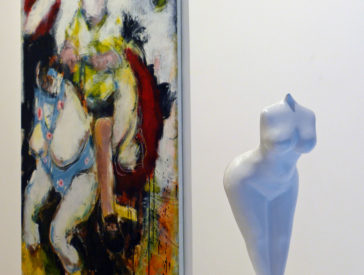

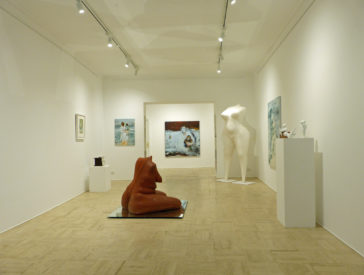
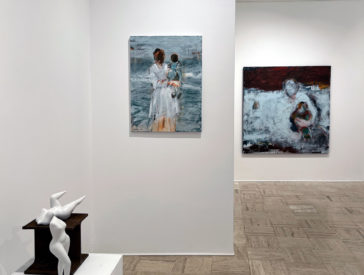
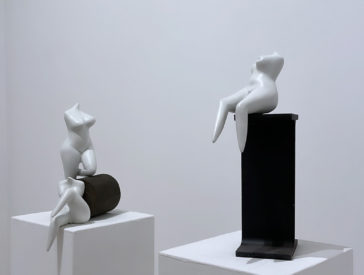
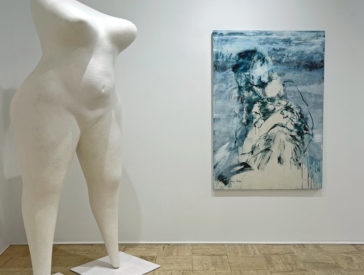
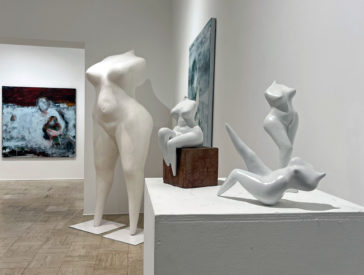
Critical essay
Woman: who was she?
by Isabella Ducrot
Art gallery Maja Arte Contemporanea is hosting an exhibit featuring the most recent sculptures by Janine von Thüngen. The timely urgency in these works charges this exhibit with added potency, which goes to enrich the artist’s well known exuberance. This is not just any exhibit precisely because of this historical moment. The coincidence of events is poignant. On the one hand, a Roman art gallery displays vibrant statues of female nudes, in a quiet street in the city centre; on the other, on the margins of Europe, what one might simply call ‘war’ has broken out. The novelty is that, for the first time, this war is a spectacle that can be observed in real time in places at peace.
Unexpectedly, the exhibition acquires new poignancy and new, layered meaning; implicitly, it poses probing questions. For example, how can a society filled with liberated women (artists) still see war as inevitable and, in traditional terms, ‘a male affair’?
Janine von Thüngen’s sculptures should be observed carefully: the female nudes, sculpted out of different materials, occupy space as a multitude of question marks. They demand responses, obstinately, never seeking to be reassuring. They seem to come out of their shell, asking for clarifications and implying a collective state of mind, one shared by all today. ‘Today’ then becomes a time more ‘present’ than usual, one whose incandescence with probably only be fully understood in the future. Perhaps, given the incumbency of the events to which we are subjected, this ‘Today’ is not a time for answers. And again it is still a time to wonder: ‘how do we, as women, live the unrest in the current alleged normality?’. These sculptures seem to suggest that in a distant future new women may be able to turn back and ask: ‘Women, who were they?’
The artist cannot ignore all of this; yet she does not seem intent on finding a coherent answer. “But ask them!” Them are her works of art: they ought to know; hence, to them we turn. Those exuberant bodies are all incomplete, while some also have something more. One can find, the trace of male genitals, a missing head — as is the case for all the statues —, an emphatic portrayal of breasts — the most evident female part — with one having three breasts. The latter makes us dream; it seems to announce, ‘here is abundance, and then more’ and seemings to claim that the power to nourish should never be underestimated.
Evidently, almost seductively, each of these statues, whether big or small, combines opposite personalities. The women are bold, liberated, free from allusions to edenic deities or sacrality. They resemble larger, budding girls who boldly take up space on busses with their summer clothes barely containing them. Yet in spite of their assuredness and determination, these statues are headless. It does not seem as though they have lost their head, but rather as if they never had one.
To the potential question, raised by future women: ‘Women: who were they?’ there will be answers which we are not allowed to give today; that is the mystery of our present time. We cannot know now how we were.
A Mother for Earth
by Margareth Dorigatti
The female figure, the beautiful bearer of life, has been the object of veneration since prehistory. In several cases, rites and myths found their focus in symbolic representations of femininity, portrayed as a both divinity and an archetypal mother.
Rooted in narrated mythology, history continued to connect the imagery surrounding maternity to female deities first and, with the rise of Christianity, to the figure of Mary, often portrayed holding her baby or cradling her adult child’s dead body. Both images are powerful, impossible to ignore. When Mary becomes the Madonna she still resembles the female deities found in Greco-Roman mythology: like them, she is independent, solitary, powerful.
I am aware that Vismeh does not want her work to be read in light of the recent conflict, or, more broadly, WAR; however, I find it challenging, given the times, not to associate certain images to our anxious need for protection, escape, and safety. Her images work far better than many that circulate online. We find before us a variety of women, young and older, often portrayed with their children. In observing them, I reflect on the roles of Aphrodite, Athena, Artemis, the Madonna-Maria etc; and yet, I cannot help but think that the gap separating her figures from the faces of the women seen in media today is but a sliver.
Vismeh’s paintings are thought-provoking and emotional; they invite the viewer to reflect upon their very creation, and not just their content. If life is both a struggle and a balancing of opposites, then polemos (war) becomes what it is precisely because it is not its opposite. Thus, as Spinoza believed, ‘every determination is, simultaneously, a negation.’ When Leila Vismeh conceives the female anatomy, alone, or with another human being in her arms, she proclaims her analytical vision; the latter then becomes a rapid, firm gesture which carries emotions while simultaneously censoring. In cancelling, the creative act unites; in dividing, it harmonises. And it is thus that these figures are born to new life: on the one hand within the painting itself, in its uniqueness; on the other, in the energy that it emanates, independently of its viewers.

